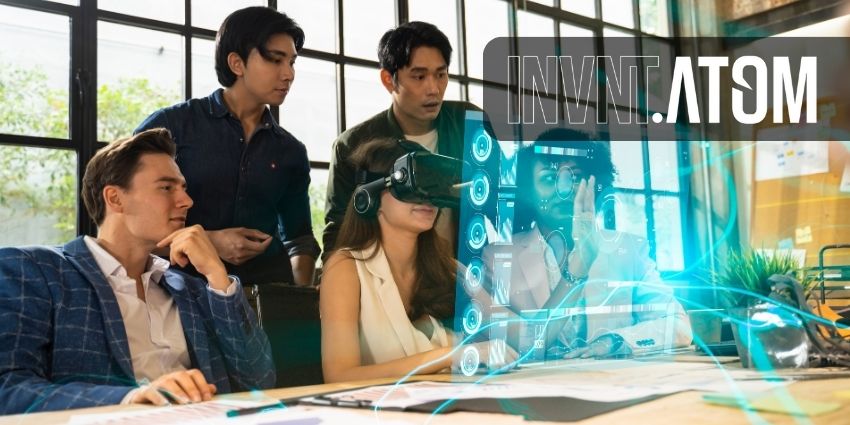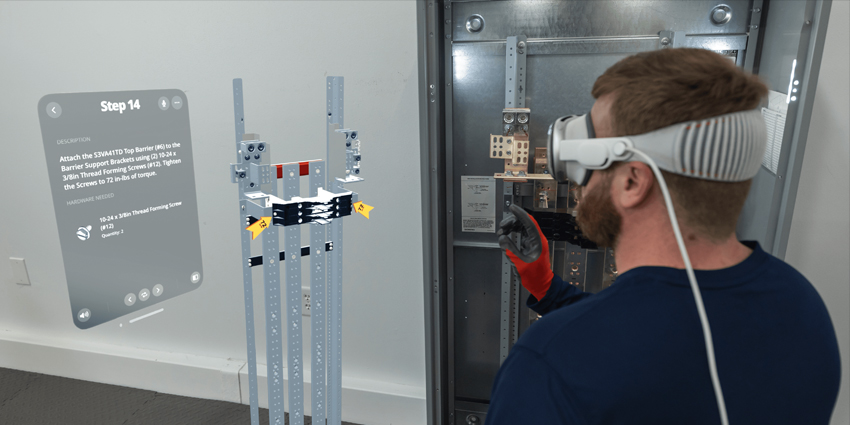Immersive 3D environments are transforming the way knowledge is shared and internalized. This shift from traditional academic instruction to a more holistic, experiential learning approach underscores the deep connection between thinking, doing, and learning.
Historically, professional training and formal education have often neglected the practical application of knowledge, focusing instead on theoretical instruction. However, immersive learning technologies have been changing this narrative.
“The traditional format of learning, often with one expert sharing information, is instructor-centric and falls short on efficiently imparting ‘hands-on’ training content,” says Rui Xin Oh, Senior Project Manager at INVNT. ATOM.
Bridging the Gap Between Theory and Practice
Addressing the challenge of providing practical training in professional settings, INVNT.ATOM’s partnership with the Emirates Group and Amazon Web Services (AWS) exemplifies the potential of using digital twins to overcome physical and logistical training limitations. The creation of a virtual A380 allows flight crew trainees to immerse in a realistic cabin environment and familiarize themselves with complex operational procedures.
Contextual learning in virtual reality (VR), coupled with feedback, enables trainees to better absorb and master intricacies through repeated practice, 24/7 from any device, anywhere, fostering muscle memory and confidence. This triumphs conventional classroom learning that is somewhat inflexible in scheduling, resourcing, and accessibility aspects.
Furthermore, virtual environments with multi-user functionality can mirror a socialization advantage offered by conventional classroom learning. Trainees would be able to learn with and from their peers, promoting knowledge engagement and retention.
“Within a safe virtual replica of their future workplace, learners are empowered to take charge of their own journey, all without significant increase of additional manpower in the training department.” Says Rui Xin Oh.
Creating for Virtual Reality (VR)
It is no secret that VR user interfaces and experiences vastly differ from web-based or application-based sites. With the former, learners need to be reasonably comfortable with orienting themselves in a 3D space. How can VR experiences be designed to aid learners in their transition to becoming more spatially aware, in which virtual worlds become more intuitive, and knowledge is digested in a more humanly palatable manner?
“We must do our best to ensure users are not anxious to access their training content through VR. The actual medium of delivery tends to be a mental barrier for many from the outset,” Rui explains. “Careful thought prior to development should also be given to when and where during the experience that users could benefit from guidance and positive feedback. It is useful to be mindful of the goal of the experience. Keeping things simple could go a long way.”
The potential of VR in professional learning environments is immense, particularly for digital natives embarking on early career training. By simulating real-world scenarios in a photo-realistic environment, VR training platforms will set new standards in experiential learning. This approach enhances skill acquisition and prepares trainees for real-world challenges in a safe, controlled environment.
For enterprises and brands looking to enhance their training programs, embracing VR technology offers a forward-thinking solution and ensures a higher level of preparedness and proficiency among trainees.
“It is one thing to create a seamless VR experience that mirrors reality, it is another to elevate a current program and create for scale and meaning, as well as speak to an organization’s distinct culture – looking at values and strategy over just execution is therefore essential.” Rui adds.
To explore how VR can transform your training approach at scale to drive the most impact, contact INVNT.ATOM and step into the future of learning.







